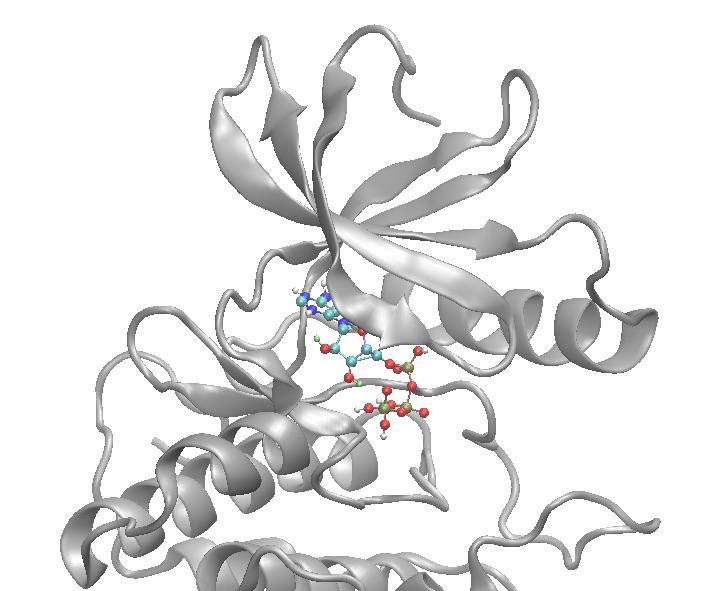ACADEMIA
Computational model of a human kinase may provide insights for cancer treatment
Researchers have developed a computational model for human MEK1, a protein with potential as a drug target for a variety of human cancers.
The initiation and progression of cancer cells occur when molecular signals involved in cellular proliferation go awry. MEK1 plays an essential role in signaling within both healthy and cancer cells. While much is known about the key role of MEK1 in such signaling events, scientists still don't know the structural features of MEK1 that lead to its activation in those events.
As reported in the Journal of Chemical Information and Modeling, a group of researchers at Cal Poly San Luis Obispo led by Ashley McDonald and collaborator Javin Oza have developed computational models for the structure of the human MEK1 enzyme.  {module In-article}
{module In-article}
"Since we don't know the structure of MEK1, we identified other proteins that had similar features and mechanisms of action," said McDonald. "Using those structures as templates, we could construct models of MEK1, and then validate those models against key characteristics identified by our biochemist collaborators."
Biochemical characterization of proteins like MEK1 remains particularly challenging because they undergo modifications called phosphorylation, which can significantly change the protein's structure and function. In the case of MEK1, phosphorylation activates the enzyme and propagates the signal for cellular proliferation.
"Our gap in understanding the biochemistry of phosphorylated enzymes like MEK1 is in part due to technical challenges in obtaining useful quantities of pure, active enzyme," said Oza. "Computational modeling has allowed us to bridge this gap and has provided insights into what MEK1 may look like inside of a cancer cell."
These insights into the structure of MEK1 open the door to the development of new classes of inhibitors that could have potential as cancer therapeutics.
"This research shows that there's great promise for combining computational and experimental science to provide unique insights into problems that are hard to study," said McDonald.
With models of active MEK1 now available, scientists can follow up with experimental methods to discover how the protein's structure governs its function. The combination of supercomputing and biochemical characterization of MEK1 and enzymes like it has the potential to provide new insights into drug development for tumor-specific therapeutics.
